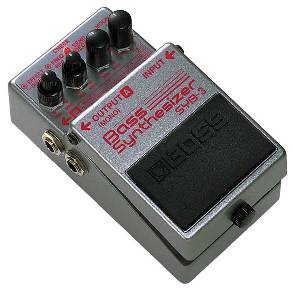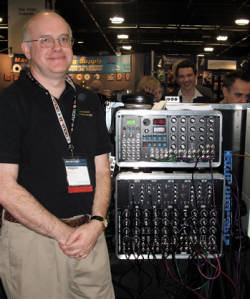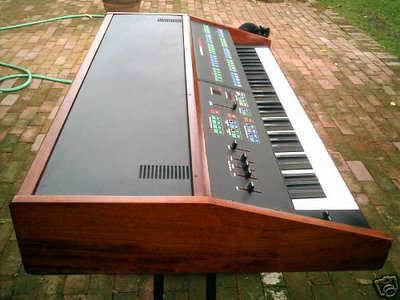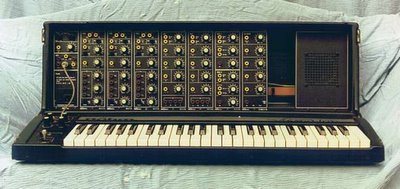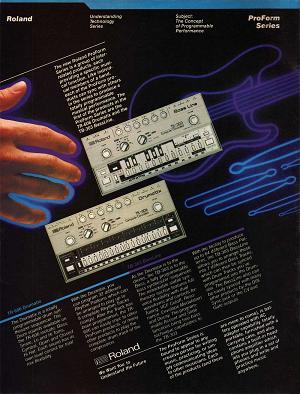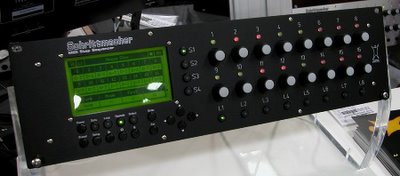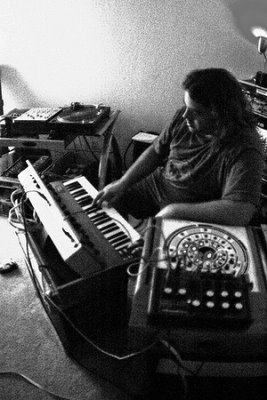
Monday, January 30, 2006
Sunday, January 29, 2006
Moog 15 Modular Shots
Note: links to listings are affiliate links for which the site may be compensated.
this auction.
"This model 15 comes with:
(1) 907a fixed filter bank
(1) 995 group of 3 attenuators
(1) 904=A Voltage control low pass filter
(2) 902 VCAs
(2) 911 envelope generators
(1) 921 VCO
(1) 923 Hi pass & low pass filter bank with pink and white noise source.
(2) 921B slave oscilators
(1) 921A oscillator driver
(1) bottom section includes mixer, mults, reversable attenuators, trigger outputs, control outs."
this auction.
"This model 15 comes with:
(1) 907a fixed filter bank
(1) 995 group of 3 attenuators
(1) 904=A Voltage control low pass filter
(2) 902 VCAs
(2) 911 envelope generators
(1) 921 VCO
(1) 923 Hi pass & low pass filter bank with pink and white noise source.
(2) 921B slave oscilators
(1) 921A oscillator driver
(1) bottom section includes mixer, mults, reversable attenuators, trigger outputs, control outs."
Orgon Modular
Title link takes you to shots pulled from this auction. Acution notes below.

"Orgon Systems Enigiser Modular Synthesizer
This is 1 of only 6 pre-production synthesizers hand built by Geoff Waterston. Also features modules that were never commercially released.
Consisting of 21 modules based around the amazing Orgon Systems Enigiser
3 X Voltage Controlled Oscillators
Rock stable design. No temperature drift. Excellent scaleaccuracy-upto 10 octaves.
Unique, rich and powerful sound quality.
Able to hold a true zero beat for hours.
Coarse and fine tune controls.
Sawtooth, sine, triangle and PWM waveform outputs.
Exceptionally accurate 1 volt per octave tracking. (0v to 10v).
Exponential modulation input.
Linear FM input
Pulsewidth modulation input (0% to 100% duty cycle).
PWM Shape control (0% to 100% duty cycle).
Oscillator sync (Absolutely awsome sounding!)
1 X Enigiser Filter
Variable multipole filter design unique to Orgon Systems.
Taken directly from the Orgon Systems Enigiser Synthesizer.
Voltage Controlled Resonance
2 X signal inputs
2 X control voltage inputs (filter frequency).
1 X resonance control voltage input.
25 switchable filter responses!!
6 dB oct lowpass
12 dB oct lowpass
18 dB oct lowpass
24 dB oct lowpass
Phase shifter 1
6 dB oct highpass
6 dB oct bandpass
12 dB oct bandpass
18 dB oct bandpass
Phase shifter and bandpass
6dB notch
6 dB lowpass scattered poles
12 dB lowpass scattered pole
18 dB lowpass scattered pole
Narrow phase shift
2 X Voltage Controlled Amplifier with Log & Lin Response
High spec VCA with logarithmic & linear switchable responses.
2 signal inputs with gain controls.
2 control voltage inputs with gain controls.
Initial gain control.
Will work with audio and control voltages (AC or DC).
1 X Multimode VCF
Orgon Systems take on the classic state variable filter.
Fully resonant to oscillation.
4 simultaneous outputs (lowpass, highpass, bandpass & notch).
2 signal inputs with gain controls.
2 control voltage inputs with gain control (cutoff frequency).
Cutoff and resonance controls.
Extremely Fat and energetic sounding filter.
6 X ADSR Envelope Generator
Ultra fast response <1ms
Full ADSR response
Gait input & gait through sockets
Manual trigger button
Attack state gate output with led (useful for gate delays or multi-stage envelopes)
Decay state gate output with led (useful for gate delays multi-stage envelopes)
Release state gate output (useful for gate delays multi-stage envelopes)
3 x Dual LFO
0.001 Hz to 300 Hz
2 rate controls
2 rate led's
2 shape controls (pulsewidth & ramp up triangle ramp down)
2 square / pulse outputs
2 triangle / ramp outputs
1 x Noise Generator
White, red, pink & blue outputs
1 x Mixer
4 signal or control voltage inputs
Works with AC or DC
Output level control
1 x Wave Animator
This design is unique to Orgon Systems and allows control of positive & negative waveshapes with clipping & offset manipulation. You can also subtract the output signal from the original input signal.
Drive control (controls the amount of clipping)
Positive & negative shape controls (controls the amount of waveform clipping & offset)
Offset CV (controls wave symmetry with a bi-polar control voltage)
Subtracts the output signal from the original input signal.
This unique module is very hard to sum up in words as it treads into sonic territory not discovered before! Hearing really is believing. Can actually make 1 oscillator sound like 3 or turn a sign wave into a square wave and pulsewidth modulate it at the same time or chop the top off triangle waves and subtract them from the original signal. You get the idea anything is possible.
1 x Multi Connection
3 rows of 5 multi connections

"Orgon Systems Enigiser Modular Synthesizer
This is 1 of only 6 pre-production synthesizers hand built by Geoff Waterston. Also features modules that were never commercially released.
Consisting of 21 modules based around the amazing Orgon Systems Enigiser
3 X Voltage Controlled Oscillators
Rock stable design. No temperature drift. Excellent scaleaccuracy-upto 10 octaves.
Unique, rich and powerful sound quality.
Able to hold a true zero beat for hours.
Coarse and fine tune controls.
Sawtooth, sine, triangle and PWM waveform outputs.
Exceptionally accurate 1 volt per octave tracking. (0v to 10v).
Exponential modulation input.
Linear FM input
Pulsewidth modulation input (0% to 100% duty cycle).
PWM Shape control (0% to 100% duty cycle).
Oscillator sync (Absolutely awsome sounding!)
1 X Enigiser Filter
Variable multipole filter design unique to Orgon Systems.
Taken directly from the Orgon Systems Enigiser Synthesizer.
Voltage Controlled Resonance
2 X signal inputs
2 X control voltage inputs (filter frequency).
1 X resonance control voltage input.
25 switchable filter responses!!
6 dB oct lowpass
12 dB oct lowpass
18 dB oct lowpass
24 dB oct lowpass
Phase shifter 1
6 dB oct highpass
6 dB oct bandpass
12 dB oct bandpass
18 dB oct bandpass
Phase shifter and bandpass
6dB notch
6 dB lowpass scattered poles
12 dB lowpass scattered pole
18 dB lowpass scattered pole
Narrow phase shift
2 X Voltage Controlled Amplifier with Log & Lin Response
High spec VCA with logarithmic & linear switchable responses.
2 signal inputs with gain controls.
2 control voltage inputs with gain controls.
Initial gain control.
Will work with audio and control voltages (AC or DC).
1 X Multimode VCF
Orgon Systems take on the classic state variable filter.
Fully resonant to oscillation.
4 simultaneous outputs (lowpass, highpass, bandpass & notch).
2 signal inputs with gain controls.
2 control voltage inputs with gain control (cutoff frequency).
Cutoff and resonance controls.
Extremely Fat and energetic sounding filter.
6 X ADSR Envelope Generator
Ultra fast response <1ms
Full ADSR response
Gait input & gait through sockets
Manual trigger button
Attack state gate output with led (useful for gate delays or multi-stage envelopes)
Decay state gate output with led (useful for gate delays multi-stage envelopes)
Release state gate output (useful for gate delays multi-stage envelopes)
3 x Dual LFO
0.001 Hz to 300 Hz
2 rate controls
2 rate led's
2 shape controls (pulsewidth & ramp up triangle ramp down)
2 square / pulse outputs
2 triangle / ramp outputs
1 x Noise Generator
White, red, pink & blue outputs
1 x Mixer
4 signal or control voltage inputs
Works with AC or DC
Output level control
1 x Wave Animator
This design is unique to Orgon Systems and allows control of positive & negative waveshapes with clipping & offset manipulation. You can also subtract the output signal from the original input signal.
Drive control (controls the amount of clipping)
Positive & negative shape controls (controls the amount of waveform clipping & offset)
Offset CV (controls wave symmetry with a bi-polar control voltage)
Subtracts the output signal from the original input signal.
This unique module is very hard to sum up in words as it treads into sonic territory not discovered before! Hearing really is believing. Can actually make 1 oscillator sound like 3 or turn a sign wave into a square wave and pulsewidth modulate it at the same time or chop the top off triangle waves and subtract them from the original signal. You get the idea anything is possible.
1 x Multi Connection
3 rows of 5 multi connections
RC-1324 Bus Converter
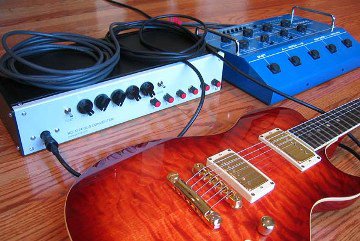
"Converts 13-Pin Signals to 24-Pin Format and Expands Synthesizer Controls
- Incorporates circuitry and design concepts by GR-300 authority Mark Smart!
- Use any Modern Roland-Ready, GK-1, GK-2/GK-2A, GK-3, or RMC equipped guitar to play any Vintage, 24-pin Roland Guitar Synthesizer
- Complete Vintage 24-Pin Synth Controls recreated on the front panel, including Pitch Bend, Mode Switch and More!
- Tested for use with the Roland GR-100, GR-300, GR-700, GM-70, Ibanez MC1 and the Korg Z3
- Unique Built-In Hex Fuzz adds G-303/G-808 Style Hex Fuzz with Separate Output
- Front Panel Hex Fuzz Filter Switch for Normal or Bright Tone
- Works with Roland US-20 Unit Selector for Multiple Synthesizer System
- Foot Pedal Control over Vibrato/LFO depth replaces difficult-to-use LFO Touch Pads
- Adapts standard 13-Pin Synth Volume Control for 24-Pin Synth Volume Control, including Synthesizer/Guitar Balance Control
- Electronically Buffered Outputs for Volume Controls and Modulation
- 6 Front Panel Control Knobs for 24-Pin String Output Levels
- Powered by 24-Pin Synthesizer so there is no need for External Power Supply
- 2-space, Rack mountable Enclosure with Detachable Rack Ears for Rack mount or Table-Top Operation
- Laser-Etched, CAD Designed Front Panel"
Roland GK-2a/GR-300 Interface
Prophet64
More tempation to hit some flea markets for an old Commodore 64.
"Prophet 64 is a series of synthesizer software for the Commodore 64. There are currently three editions, all MIDI compatible via DIN-sync (like the 303/606/808 etc) finally making it possible to use the C64 for contemporary music."
PROPHET 64 1.3 STANDARD EDITION
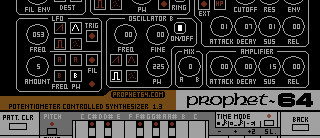
* Real 303 editing
* Joystick or potentiometer (game paddles) control
* Assigned keys for all sound parameters
* Prophet 5 layout
* Constant slide
* Shuffle ("swing")
* Advanced Random Composer (A.R.C.)
* DIN-Sync (SYNC 24) - to synchronize MIDI-sequencers
* Store sounds and patterns on disk or tape
PROPHET 64 TB-EDITION 1.1

* Same features as the standard edition
* Only TB-303 sound parameters
* Aimed at users that only want the TB-303 sound
* Accent
PROPHET 64 TR EDITION 1.0
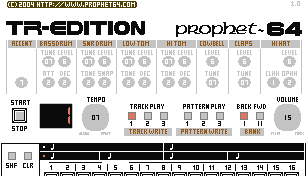
* Drum machine software
* Classic Rob Hubbard "wave table" sounds right at your fingertips!
* 3 voice polyphony
* 909 style sequencer
* Shuffle
* Step or Tap write patterns
* Tone controls offer full control of the sounds
* 6 tracks, 96 patterns
* Play drum sounds polyphonically on C64 keyboard!
* DIN-Sync
Looks like a sequencer is coming as well.
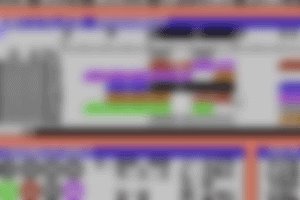
Title link takes you there. Via C64Music!
"Prophet 64 is a series of synthesizer software for the Commodore 64. There are currently three editions, all MIDI compatible via DIN-sync (like the 303/606/808 etc) finally making it possible to use the C64 for contemporary music."
PROPHET 64 1.3 STANDARD EDITION

* Real 303 editing
* Joystick or potentiometer (game paddles) control
* Assigned keys for all sound parameters
* Prophet 5 layout
* Constant slide
* Shuffle ("swing")
* Advanced Random Composer (A.R.C.)
* DIN-Sync (SYNC 24) - to synchronize MIDI-sequencers
* Store sounds and patterns on disk or tape
PROPHET 64 TB-EDITION 1.1

* Same features as the standard edition
* Only TB-303 sound parameters
* Aimed at users that only want the TB-303 sound
* Accent
PROPHET 64 TR EDITION 1.0

* Drum machine software
* Classic Rob Hubbard "wave table" sounds right at your fingertips!
* 3 voice polyphony
* 909 style sequencer
* Shuffle
* Step or Tap write patterns
* Tone controls offer full control of the sounds
* 6 tracks, 96 patterns
* Play drum sounds polyphonically on C64 keyboard!
* DIN-Sync
Looks like a sequencer is coming as well.

Title link takes you there. Via C64Music!
NeuroSky
 "NeuroSky, a fabless semiconductor/module company, has developed a non-invasive neural sensor and signal processing technology that converts brainwaves and eye movements into useful electronic signals to communicate with a wide range of electronic devices, consoles, and computers."
"NeuroSky, a fabless semiconductor/module company, has developed a non-invasive neural sensor and signal processing technology that converts brainwaves and eye movements into useful electronic signals to communicate with a wide range of electronic devices, consoles, and computers."No mention of MIDI or CV, but if this catches on, I could see it happening. When I was in a band, I used to joke about sitting on a stage and just playing music from our heads. Looks like that day might be coming.
Update: Via Awakened_Yeti in the comments:
"there has already been a few options of brainwave-to-MIDI software available
http://tamw.atari-users.net/brainwav.htm
http://www.ibva.com/"
Torture-Mentale BOSS SYB-3 Sample
Synthesizers.com Ratcheting Sample
Yves Usson posted an example of "ratcheting" on the AH list. I asked him if I could put it up. Not only did he say yes, but he sent an image of the patch he created for the sample. Click the image below for the full size shot. Title link takes you to the 540KB sample. His notes below. Thanks Yves!
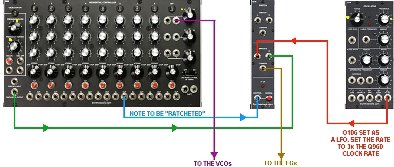
"This is a 8 note sequence and one note is "ratcheted" every 3 runs.
You will hear this typical TD effect of a note being "machine guned"
once in a while !
For technical detail this sequence was played on C960 DOTCOM
sequencer and the ratchet effect was obtained using a syncrhonized
LFO and a Voltage controlled Switch (Q128)."

"This is a 8 note sequence and one note is "ratcheted" every 3 runs.
You will hear this typical TD effect of a note being "machine guned"
once in a while !
For technical detail this sequence was played on C960 DOTCOM
sequencer and the ratchet effect was obtained using a syncrhonized
LFO and a Voltage controlled Switch (Q128)."
MOTM NAMM 2006 via Synthtopia
Saturday, January 28, 2006
Haken Audio Continuum - Impressions
Paul Sop posted his impressions of the Haken Audio Continuum on the Analog Heaven mailing list. I asked him if it would be ok if I put up a post here for those not on AH. He said go right ahead. Very cool. Title link takes you to some more shots. His thoughts are below. Note that Paul currently has the only white Continuum. Thanks Paul!

"Here are some observations I have on the instrument:
1) Like Hakken says, it takes a long time to learn. I now have nice Sitar music comming out of it. I'd say if you were a keyboard player, it would be harder to learn than if you were a violin, or steel guitar player. It's more like a violin than a keyboard in my opinion.
2) It is >10 finger polyphonic. I think it might be up to 16 finger polyphonic. You can sit on one side of it, and a friend can sit on the other side, and you can both play at the same time. -- WILD
3) There is considerable difference between the Firewire output's capability and MIDI's capability. This is a bit involved, so I'll do this in subsections to this point:
3a) With MIDI, (and I may be a bit wrong about some of this, for I'm still figuring MIDI out on it), you might have, say 10 notes active at the same time. You can set up MIDI on the fingerboard to send out on a single channel, so all 10 notes would be on one channel. If you do that, it is easy to patch to soft synths, BUT any pitch-bend information sent by wiggling a finger back and forth affects ALL the notes.
3b) You can also set up MIDI so that each note is sent on its own channel. This is, of course, better, but I've had a lot of trouble getting softsynths to listen to all channels properly. If you put the softsynth in OMNI mode, it seems the pitchbend problem occurs again. I may have something wrong here, and will figure it out some day I'm sure
3c) If you use the Kyma, these restrictions are gone, as the instrument tracks each finger position (x and y axis) and pressure (z axis) perfectly, and with great finesse.
4) Lippold just released new firmware with a nice legato feature. It's like a fretless device, so if you put your finger down slightly to the left, your sound is slightly lower. That being said, you can also activate pitch rounding, so your initial touch is pitch perfect.
5) I've had great success playing analog gear with the Continuum. Just realize that there is some complexity due to the fact that each finger can have its own pitch-bend, and depending on your MIDI destination's capabilities, you can either have full awesomeness, or tell the fingerboard to make some MIDI compromises. This is all of course, just living with MIDI's issues.
6) Holy the thing rocks when used creatively. I now pretty much use only the fingerboard and a Marimba Lumina, and my music sounds A LOT more fun than it did before. It's hard to describe what you can do with the fingerboard in words. Here are some goofy things I've done with it:
- Map different samples to different pressures, with granulation based on the y axis. This sounds lame, until you realize it's not a keyboard, and you can do things like keep your finger in a single position, and strum up and down with great precision to a beat. So your finger becomes like an LFO. Then you can map the y-axis to a granulator, etc...
- Amazing for plucked guitars: listen to Ed Eagan's stuff on the http://www.hakenaudio.com/Continuum/ website. He shared a lot of his sounds, and it only took about 2 weeks for me to get about 1/2 as good as he is with all those Sitar style sounds.
- It's an awesome ambient sound generator. If you're doing soundtrack style music, you can sort of connect your soul to the fingerboard, and watch your movie, and really capture a lot of emotional gestures that are very workable."

"Here are some observations I have on the instrument:
1) Like Hakken says, it takes a long time to learn. I now have nice Sitar music comming out of it. I'd say if you were a keyboard player, it would be harder to learn than if you were a violin, or steel guitar player. It's more like a violin than a keyboard in my opinion.
2) It is >10 finger polyphonic. I think it might be up to 16 finger polyphonic. You can sit on one side of it, and a friend can sit on the other side, and you can both play at the same time. -- WILD
3) There is considerable difference between the Firewire output's capability and MIDI's capability. This is a bit involved, so I'll do this in subsections to this point:
3a) With MIDI, (and I may be a bit wrong about some of this, for I'm still figuring MIDI out on it), you might have, say 10 notes active at the same time. You can set up MIDI on the fingerboard to send out on a single channel, so all 10 notes would be on one channel. If you do that, it is easy to patch to soft synths, BUT any pitch-bend information sent by wiggling a finger back and forth affects ALL the notes.
3b) You can also set up MIDI so that each note is sent on its own channel. This is, of course, better, but I've had a lot of trouble getting softsynths to listen to all channels properly. If you put the softsynth in OMNI mode, it seems the pitchbend problem occurs again. I may have something wrong here, and will figure it out some day I'm sure
3c) If you use the Kyma, these restrictions are gone, as the instrument tracks each finger position (x and y axis) and pressure (z axis) perfectly, and with great finesse.
4) Lippold just released new firmware with a nice legato feature. It's like a fretless device, so if you put your finger down slightly to the left, your sound is slightly lower. That being said, you can also activate pitch rounding, so your initial touch is pitch perfect.
5) I've had great success playing analog gear with the Continuum. Just realize that there is some complexity due to the fact that each finger can have its own pitch-bend, and depending on your MIDI destination's capabilities, you can either have full awesomeness, or tell the fingerboard to make some MIDI compromises. This is all of course, just living with MIDI's issues.
6) Holy the thing rocks when used creatively. I now pretty much use only the fingerboard and a Marimba Lumina, and my music sounds A LOT more fun than it did before. It's hard to describe what you can do with the fingerboard in words. Here are some goofy things I've done with it:
- Map different samples to different pressures, with granulation based on the y axis. This sounds lame, until you realize it's not a keyboard, and you can do things like keep your finger in a single position, and strum up and down with great precision to a beat. So your finger becomes like an LFO. Then you can map the y-axis to a granulator, etc...
- Amazing for plucked guitars: listen to Ed Eagan's stuff on the http://www.hakenaudio.com/Continuum/ website. He shared a lot of his sounds, and it only took about 2 weeks for me to get about 1/2 as good as he is with all those Sitar style sounds.
- It's an awesome ambient sound generator. If you're doing soundtrack style music, you can sort of connect your soul to the fingerboard, and watch your movie, and really capture a lot of emotional gestures that are very workable."
Michael Hoenig's Oberheim 4 Voice
Title link takes you to shots pulled from this auction. What's interesting is the action claims this to be Michael Hoenig's 4 Voice.
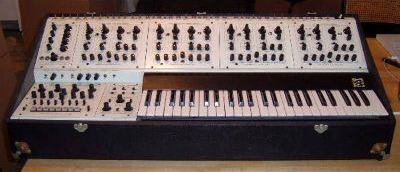
Via Yahoo! Music:
"Hoenig was one of many German composers to emerge from the innovative, electronic underground scene thriving in that country during the '60s and '70s. He first came to recognition in the progressive rock group Agitation Free in the '70s. After a short stint with Tangerine Dream, Hoenig went on to produce what is considered by many to be one of the most important albums to come out of the German electronic school. He has since moved to Los Angeles, where he currently pursues a career as a film composer. ~ Linda Kohanov, All Music Guide"
Via the auction:
"Here it is boys and girls, a one of a kind collector’s item. One of the holy grails of 80’s pop music, the classic Oberheim 4-voice synthesizer with the custom J.L. Cooper trigger mods used on the Tangerine Dream scores and records of the 80’s.
It is available now because Michael Hoenig has moved back to Europe and is liquidating his studio. A certificate of authenticity is available. We do not have the manual for the 4-voice but we do have all paperwork for the Cooper Mods. No Reserve. This is a heavy piece and we strongly suggest that you have this valuable item custom crated and shipped via freight carrier."

Via Yahoo! Music:
"Hoenig was one of many German composers to emerge from the innovative, electronic underground scene thriving in that country during the '60s and '70s. He first came to recognition in the progressive rock group Agitation Free in the '70s. After a short stint with Tangerine Dream, Hoenig went on to produce what is considered by many to be one of the most important albums to come out of the German electronic school. He has since moved to Los Angeles, where he currently pursues a career as a film composer. ~ Linda Kohanov, All Music Guide"
Via the auction:
"Here it is boys and girls, a one of a kind collector’s item. One of the holy grails of 80’s pop music, the classic Oberheim 4-voice synthesizer with the custom J.L. Cooper trigger mods used on the Tangerine Dream scores and records of the 80’s.
It is available now because Michael Hoenig has moved back to Europe and is liquidating his studio. A certificate of authenticity is available. We do not have the manual for the 4-voice but we do have all paperwork for the Cooper Mods. No Reserve. This is a heavy piece and we strongly suggest that you have this valuable item custom crated and shipped via freight carrier."
SYMPTOHM:MELOHMAN SYNTH
I was reading this review of the SYMPTOHM:MELOHMAN SYNTH and decided to check it out. It comes from Ohm Force, the development force behind GMedia's brilliant soft synths like the Minimonsta and Oddity. Title link takes you to the Ohm site with samples. Make sure to check out the review for a users take on the soft synth. And... Check out this skin.
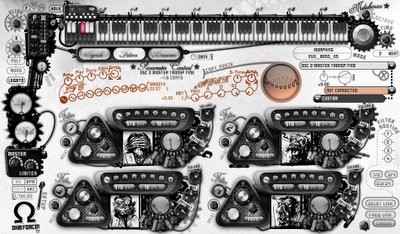

Friday, January 27, 2006
AHMW 2006
Via the AH mailing list. Analog Heaven Midwest is coming. I asked Andrew if I could put up a post post and he said blog away! Here you go.
"Its... (cue Monty Python music)
The Analogue Heaven Midwest Getogether 2006 : Saturday March 25
http://www.ph.k12.in.us/~drew/ahmw/
If you're anywhere near Indiana and you like your synths in hardware form,
please join us for what is always a really fun day. Check out the picture
archives if you have any doubts!
Note: there is some *new* info on the page (in red). Please take a look at
it, even if you're an AHMW regular.
Please pass this along to DIY, MOTM, etc. lists!
Andrew, your host"
"Its... (cue Monty Python music)
The Analogue Heaven Midwest Getogether 2006 : Saturday March 25
http://www.ph.k12.in.us/~drew/ahmw/
If you're anywhere near Indiana and you like your synths in hardware form,
please join us for what is always a really fun day. Check out the picture
archives if you have any doubts!
Note: there is some *new* info on the page (in red). Please take a look at
it, even if you're an AHMW regular.
Please pass this along to DIY, MOTM, etc. lists!
Andrew, your host"
FORMANTA P-432 Shots
Click here for shots pulled from this auction. Via Alex Thorston. Thanks Alex!
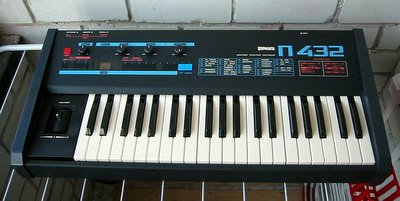
From the auction:
"MANUFACTURED BY FAMOUS POLIVOKS MILITARY PLANT AT KACHKANAR!
BUILT-IN ANALOG CHORUS, VIBRATO AND INCLUDE MIDI (IN, OUT, THRU)
NICE REAL TIME CONTROL - X-Y JOYSTICK, PEDAL (SUSTAIN + VIBRATO)
FOUR VOICE POLYPHONY, 32 PATCHES, UNISON MODE, TUNING
FOR MORE MY DESCRIPTION CLICK HERE

From the auction:
"MANUFACTURED BY FAMOUS POLIVOKS MILITARY PLANT AT KACHKANAR!
BUILT-IN ANALOG CHORUS, VIBRATO AND INCLUDE MIDI (IN, OUT, THRU)
NICE REAL TIME CONTROL - X-Y JOYSTICK, PEDAL (SUSTAIN + VIBRATO)
FOUR VOICE POLYPHONY, 32 PATCHES, UNISON MODE, TUNING
FOR MORE MY DESCRIPTION CLICK HERE
AELITA Shots

Click here for shots and mp3s pulled from this auction.
Via Alex Thorston. Thanks Alex!
From the auction:
"AELITA is a monophonic synthesizer, it has 3 independent OSC's + 3 sub OSC's, 1 LFO, 1VCA with ADSR, VCF with ADSR, chorus and 6-voice unison mode, good modulation functions. Full description and my review here."
POLIVOKS Shots
Title link takes you to shots pulled from this auction. Sent my way via Alex Theakston. Thanks Alex!
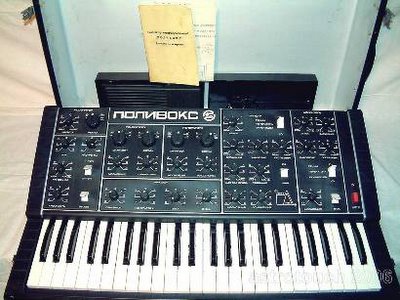
Via the auction:
The Polyvox (Polivoks) is a duophonic analog synthesizer, with a 49-note (13F-E) keyboard. It features two VCOs, a noise generator, one LFO, a filter (low-pass and bandpass), and two ADSR envelope generators. VCO1 can be cross-modulated by VCO2. Each ADSR can be switched to auto-trigger, each with independent rates.The sound is quite rich and somewhat harsh and aggressive. This is more of a space-synth. You can be sure that you will have never heard the sounds this one can produce. It sounds like these old Yamaha CS-30's, but then fat filters like in Moogs. It is built like a rock, pure military technology, contacts will last forewer. The body is solid and the knobs feel nice. It runs on 220V AC. Polivoks (Polyvox) is the most popular vintage Russian synthesizer all over the world. It has inimitable peculiar sound and very powerful aggressive filters outperforming the famous Minimoog! A fat, lush and very analogue sound is achieved through instability and thanks to unique architecture of the Soviet-era components; in addition, highly reliable military technologies were applied in the process of production. The synthesizer may be used for hard electronic music, or for soft ambient/old school projects and for modelling various effects as well.
SPECIFICATIONS :
Mains voltage of alternating current, V 220
Power consumption, W max 10
A range of operating temperature, C -10 / +35
Relative generator drift over 4 hours continuous work is within, % max +/- 05
Total musical range overlaped by main generators, Hz 21,8 (F of subcontra octave), + 5274 Hz (E of fifth octave)
Tuning range of the main generators, % min +/- 12 (+/- 1 tone)
Detuning range of the second generator, % min +/- 25 (+/- 2 tone)
Frequency change range of the cutoff frequency of the filter, Hz min 100 + 10000
Dynamic range of the synthesizer, dB min 60
Inlet voltage of the synthesizer in a load 10 kOm
Low output voltage, V 0,025
High output voltage, V 0,25
Dimensions - 780x490x195
Weight - 20.00 kgs

Via the auction:
The Polyvox (Polivoks) is a duophonic analog synthesizer, with a 49-note (13F-E) keyboard. It features two VCOs, a noise generator, one LFO, a filter (low-pass and bandpass), and two ADSR envelope generators. VCO1 can be cross-modulated by VCO2. Each ADSR can be switched to auto-trigger, each with independent rates.The sound is quite rich and somewhat harsh and aggressive. This is more of a space-synth. You can be sure that you will have never heard the sounds this one can produce. It sounds like these old Yamaha CS-30's, but then fat filters like in Moogs. It is built like a rock, pure military technology, contacts will last forewer. The body is solid and the knobs feel nice. It runs on 220V AC. Polivoks (Polyvox) is the most popular vintage Russian synthesizer all over the world. It has inimitable peculiar sound and very powerful aggressive filters outperforming the famous Minimoog! A fat, lush and very analogue sound is achieved through instability and thanks to unique architecture of the Soviet-era components; in addition, highly reliable military technologies were applied in the process of production. The synthesizer may be used for hard electronic music, or for soft ambient/old school projects and for modelling various effects as well.
SPECIFICATIONS :
Mains voltage of alternating current, V 220
Power consumption, W max 10
A range of operating temperature, C -10 / +35
Relative generator drift over 4 hours continuous work is within, % max +/- 05
Total musical range overlaped by main generators, Hz 21,8 (F of subcontra octave), + 5274 Hz (E of fifth octave)
Tuning range of the main generators, % min +/- 12 (+/- 1 tone)
Detuning range of the second generator, % min +/- 25 (+/- 2 tone)
Frequency change range of the cutoff frequency of the filter, Hz min 100 + 10000
Dynamic range of the synthesizer, dB min 60
Inlet voltage of the synthesizer in a load 10 kOm
Low output voltage, V 0,025
High output voltage, V 0,25
Dimensions - 780x490x195
Weight - 20.00 kgs
The Roland ProForm Series
More NAMM 2006 via One Blue Monkey
Le Synthi V3 and Synthi AKS Schematic
Keith Seaman was doing some research on the EMS Synthi and ran into this schematic of the Keyboard Sequencer for the Synthi AKS. He sent it my way along with a link to a free Synthi emulation. Title link takes you to where you can download the software. Click on "logiceils" when you get there, scroll down and pick your flavor. Thanks Keith!
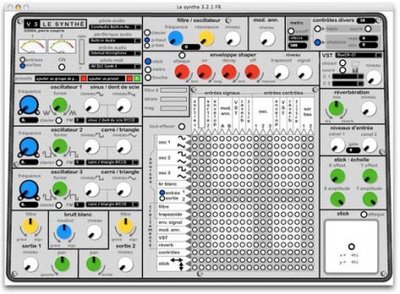

Musicians and Their Synths
Title link takes you to a site sent my way via André Bihler, of various musicians and their synths. Enjoy. Thanks André!
Jean Michel Jarre
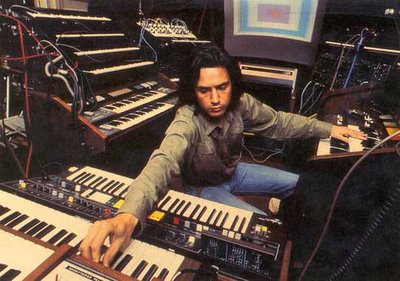
Jean Michel Jarre

Thursday, January 26, 2006
Weird Noises That Blossom Into Symphonies - NY Times

Title link takes you to an interesting article in the New York Times on the Yamaha Tenori-On, the theremin, and Buchla. Regarding the Tenori-On: "It's a digital instrument in a new form," said Toshio Iwai, a 43-year-old interactive artist and University of Tokyo professor who created the device. "It plays light as well as sound." ... "The aim of this project is to create a musical instrument for nonmusicians," Mr. Iwai said. "I'm not a musician, but I had a dream to play an instrument on the stage." This is later countered with, "The potential in such an interactive system is finite," Dr. Winkler said of the tenori-on. "It's a cool thing for kids to play with, but I don't know any musician who would want to be stuck with this guy's music."
The Funk-A-Duck and MIDI Trumpet
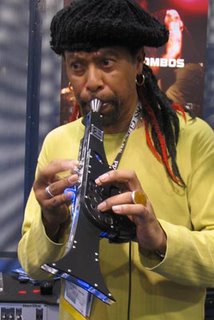
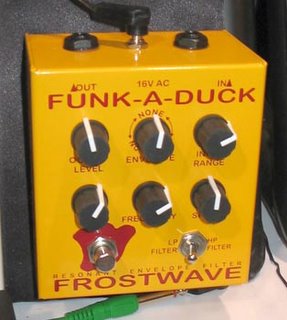
Click here for the techno geeks page of the NAMM Oddities 2006 site. You'll recognize some others there as well. BTW, Frostwave makes some amazing filterboxes. I have the Resonator, and MS-10 filter clone. Build quality is outstanding and the filter on that thing will rip the paint off walls. Via CDM.
Famous Sounds on Synthmania
Title link takes you to a page on Synthmania that has a long list of samples of famous sounds. Ever wonder what the Hoover sound everyone refers to actually sounds like? Check out "mentasm.mp3" when you get there. The Lucky Man solo? Also there.
Mindtrip - Moog MG-1 and Roland SH-1000 Tune
Title link takes you there. Posted by macman on the-gas-station.
Whacked Pro One Demo
Title link takes you to a post on VSE with a crazy Pro One demo by Jabberwalky. It's worth checking out if you want to hear a wide range of some of the quirky sounds a Pro One can make. There is also a super fat sounding Roland Jupiter 4 demo doing the THX theme by premieklovn in the thread.
Synthesizers.com Review - Build a Modular for $120 a Month
Title link takes you to a synthesizers.com review posted by tunedLow on the VSE forum. It's a good overview of his first impressions. At the end of the review he mentions, "If you're daydreaming about going modular, the entry level at 100 bucks a month can't be beat. Their descript of the plan sounds pretty flexible too." I totally forgot about this. Synthesizers.com has a deal where you send them $120 a month and they send you an item a month. In a year you have a usable modular. You can find more detail here: http://synthesizers.com/system-entry1.html. Hmm... If I remember correctly, I'd be finishing up my modular just about now if I signed up when they started this deal.
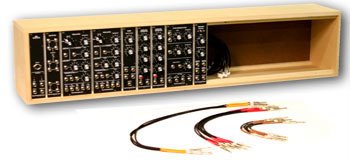

Wednesday, January 25, 2006
Gregg Janman's Modular Noodlings
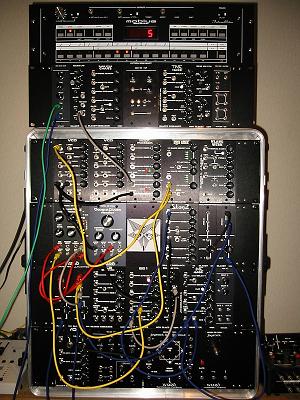 Gregg recently posted this MP3 on the Analog Heaven mailing list, as an example of the Metalbox 8008, a Roland TR-808 kick drum clone. The MP3 also includes a Blacet and Wiard modular. I asked him if it would be ok to post the sample as I thought it was really good, it's very clean so you can hear each instrument clearly. He gave me the go ahead and a whole lot more. Below are some notes by Gregg and a few more samples and descriptions of each. Very, very cool. Thanks Gregg!
Gregg recently posted this MP3 on the Analog Heaven mailing list, as an example of the Metalbox 8008, a Roland TR-808 kick drum clone. The MP3 also includes a Blacet and Wiard modular. I asked him if it would be ok to post the sample as I thought it was really good, it's very clean so you can hear each instrument clearly. He gave me the go ahead and a whole lot more. Below are some notes by Gregg and a few more samples and descriptions of each. Very, very cool. Thanks Gregg! "i post a lot of info about my modular to the black dog forum here.
i have a 37 module (and still growing but nearly complete i feel) frac
rack system with a mobius and fat controller sequencer, and a
moogerfooger mf-101 lpf. apparently it's the only frac rack modular in
japan ;)
that dimension c track is two modular voices (one blacet pwm wave into
moog filter, one blacet/wiard miniwave into blacet stonz phaser into
wiard boogie filter, both sequenced by the same cv from the mobius) plus
effects (2 blacet time machines plus a boss dimension c pedal) tweaked
and recorded live in one take and then post processed digitally with a
little reverb, compression, limiting and eq. the weirdest thing is that
if you listen to it for a while, it REALLY sounds like a grand piano!!!
here are some other modular noodlings:
- http://darkflame.hermetech.net/Musick/Babaluma-ChineseLantern.mp3
an example of putting the feedback signal of a delay through a phaser.
the main patch is the wiard noise ring output quantised by the miniwave
to a pentatonic scale set to "play" the vco's randomly, through the
above mentioned effects. - http://darkflame.hermetech.net/Musick/OneDropDrums&Acid.mp3
slow and dubby acid with the heavily modded tr-606. - http://darkflame.hermetech.net/Musick/Babaluma-VeryPhat.mp3
an excercise in phatness. - http://techno.dogsquad.co.uk/darkflame/DoubleDelaySweep.mp3
how BIG can those blacet time machines sound? - http://techno.dogsquad.co.uk/darkflame/3SquDroneEndorphin.mp3
a long drone, nice but boring? would make a good "bed" for other stuff. - http://techno.dogsquad.co.uk/darkflame/Babaluma-TheKindThatWinds.mp3
techno track, lots of modular, 606 and 8008. - http://darkflame.hermetech.net/Musick/Babaluma&Decadnids&Elf-Maggie-YamatoFluteMix.mp3
splitting a stereo mix digitally into m/s components, then processing
the m and s signals through DIFFERENT modular patches, back into the
digital realm where the m and s signals are recombined into stereo...
mmmmm.... - http://darkflame.hermetech.net/Musick/Babaluma-HymnForJohn.mp3
a complete track featured on the http://www.darkwinter.com/ album "full
cold moon", a tribute to john balance of coil, and featuring tangerine
dream/coil style modular sequencing. - http://darkflame.hermetech.net/Musick/Babaluma-TsunamiTidalWaves(PowerAmbientRemix).mp3
a full track, and one that i'm very happy with, even though it's old and
was made almost entirely in the digital domain (audiomulch on the pc). i
hope to be able to make stuff like this with just analogue gear in the
future.
anyway, feel free to post any of this stuff on your site. i'm always
looking to collaborate or master other people's stuff when my schedule
allows.
best wishes and thanks for listening and commenting, i really appreciate it!
gregg janman."
Thank you Gregg!
Roland SH-201 Video on Sonic State
Analogue Haven Booth Videos Pt 2 on Sonic State
Title link takes you to Part 2 of the Analogue Haven set with Ken MacBeth, Dieter Doepfer, and ModCan. I just started on Ken MacBeth. I'm not going to spoil it, but man... It has to be seen to be believed. Absolutely amazing.
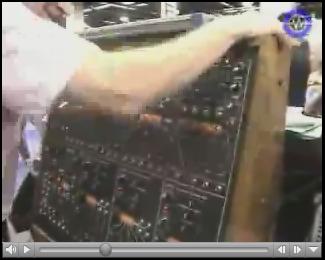
Also check out another batch of Sonic State videos including Line6, Nord, Waves, Analog stuff, Quantum Leap, Korg, Muse Research.

Also check out another batch of Sonic State videos including Line6, Nord, Waves, Analog stuff, Quantum Leap, Korg, Muse Research.
Future Retro XS Just Might Get MIDI Afterall
Via Jared on the yahoo group.

"We will try and add MIDI input for control of the XS before the unit goes
into production. This would allow a stock Revolution to control the accent
times of the XS. For those who prefer to control the XS with the CV and Gate
outputs, we have come up with a simple modification which allows the output
of a gated accent signal. We will post more information on how to do this as
we finalize the designs of the XS.
We will try and add MIDI input for control of the XS before the unit goes
into production. This would allow a stock Revolution to control the accent
times of the XS. For those who prefer to control the XS with the CV and Gate
outputs, we have come up with a simple modification which allows the output
of a gated accent signal. We will post more information on how to do this as
we finalize the designs of the XS."

"We will try and add MIDI input for control of the XS before the unit goes
into production. This would allow a stock Revolution to control the accent
times of the XS. For those who prefer to control the XS with the CV and Gate
outputs, we have come up with a simple modification which allows the output
of a gated accent signal. We will post more information on how to do this as
we finalize the designs of the XS.
We will try and add MIDI input for control of the XS before the unit goes
into production. This would allow a stock Revolution to control the accent
times of the XS. For those who prefer to control the XS with the CV and Gate
outputs, we have come up with a simple modification which allows the output
of a gated accent signal. We will post more information on how to do this as
we finalize the designs of the XS."
NAMM 2006 via Retrosynth
PREVIOUS PAGE
NEXT PAGE
HOME













© Matrixsynth - All posts are presented here for informative, historical and educative purposes as applicable within fair use.
MATRIXSYNTH is supported by affiliate links that use cookies to track clickthroughs and sales. See the privacy policy for details.
MATRIXSYNTH - EVERYTHING SYNTH













© Matrixsynth - All posts are presented here for informative, historical and educative purposes as applicable within fair use.
MATRIXSYNTH is supported by affiliate links that use cookies to track clickthroughs and sales. See the privacy policy for details.
MATRIXSYNTH - EVERYTHING SYNTH


